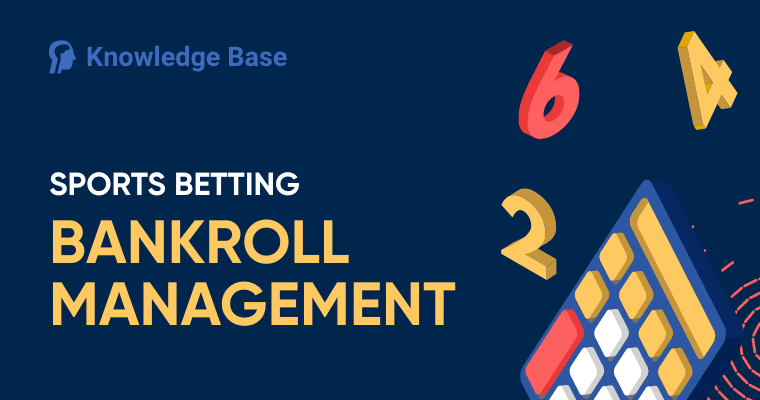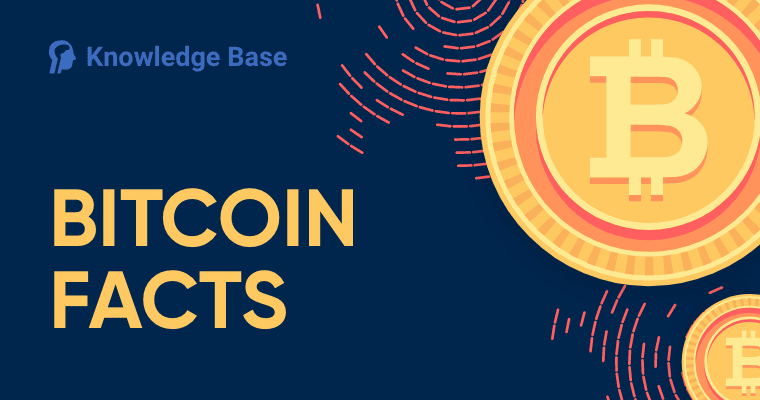How to Buy Bitcoin: Everything You Need
Bitcoin is a divisive subject and always has been. Some love its investment potential and lack of regulations, while others might hate its libertarian underpinnings and the surrounding technobabble, or distrust its volatility.
Hate it or love it, Bitcoin has become both popular and profitable. When it first entered the market, its value was $0.0008. At the time of writing, a single unit is worth over $37,390, which you probably know if you’re wondering how to buy Bitcoin. Luckily, you’ve come to the right place: This is a detailed, step-by-step guide on everything you need to purchase Bitcoin safely and quickly.
Steps for Buying Bitcoin
- Create a personal wallet.
- Find a trusted cryptocurrency exchange.
- Choose a payment method.
- Buy Bitcoin.
A Bitcoin Investment
Is it smart to put your money in Bitcoin? As usual, there’s no single right answer. Bitcoin is infamously volatile for many reasons, so how much you’re prepared to lose if it suddenly drops in price should be a key factor when deciding whether to invest in Bitcoin. It’s also still in the process of gaining a foothold: Unlike fiat currencies, Bitcoin does not have a central financial institution to regulate it, and it’s still building up adoption – a core metric for currencies of any kind. As such, due to a smaller number of people using the currency that has a finite supply, drops or jumps in price occur often. This problem is epitomized in Bitcoin whales – owners of huge Bitcoin supplies who threaten to further destabilize the currency. Hence, investing in Bitcoin is generally considered to be risky.
For example, the sale of a significant amount of Bitcoin can plummet its value quickly. On top of that, Bitcoin has an on-going liquidity problem. Some experts believe that one of Bitcoin trading’s main issues is that it has become more of an investment opportunity than a currency – it’s traded to turn a profit and rarely used to make transactions.
Still, due to its rapidly rising adoption and value, Bitcoin is becoming increasingly popular for investors. Bitcoin investing comes with its own risks, but it’s much safer now than it was some years back. And if you plan on utilizing Bitcoin to make gambling transactions, it holds incredible potential. All Bitcoin transactions are confidential and safe, thanks to encryption, and they usually take less than 10 minutes. Furthermore, there are no bank fees, but you do need to pay a Bitcoin miner fee. Crypto exchanges can also charge a percentage when you purchase Bitcoin – more on that later.
Is Bitcoin Safe?
Transaction privacy and safety are Bitcoin’s core strengths. You can safely buy Bitcoin without revealing your identity. While confidential, the transactions are not entirely anonymous. The Bitcoin blockchain, which is basically a distributed ledger, publicly shows all transactions that occur. The blockchain only displays your public key next to the transaction, but there’s no information to reveal the keyholder’s identity. Both you and everyone else can see all the transactions, but you cannot identify the parties involved.
Ok, but can a skilled cybercriminal somehow steal your Bitcoin, since it’s all online, even if you buy Bitcoin anonymously? Thankfully no, as Bitcoin is basically a tamper-proof system: All transactions are verified by every node on the blockchain network, making external changes impossible. If you’re looking for an anonymous, quick, and safe way to do transactions, Bitcoin is the way to go.
Step-by-Step Guide
The First Step – Create a Personal Wallet
Crypto wallets are pieces of software that keep a record of all of your transactions, and all Bitcoin transactions occur between wallets. Therefore, the first step for those who want to buy and store Bitcoin should be to create a personal wallet. We say personal because cryptocurrency exchanges also offer to make a Bitcoin wallet for you. Still, you should use these only as intermediaries, as their security is tied to the overall safety of the crypto exchange. In case the exchange site gets compromised, you could potentially lose access to your Bitcoin, so you should always try to move most of it to your personal wallet.
Before we delve deeper into crypto wallet selection and show you how to buy Bitcoin, you should familiarize yourself with the distinction between a Bitcoin hot wallet and cold wallets.
Hot wallets run on internet-connected devices like computers, smartphones, or tablets. The main reason to keep your Bitcoin in a hot wallet is to perform online transactions, so you’ll definitely need one to trade. But, as with any device connected to the internet, there’s a certain risk involved: Hot wallets generate the private keys required to access Bitcoin, so if your device becomes compromised, someone might gain unauthorized access to your funds. If you’re wondering how to buy Bitcoin online, the first prerequisite is to own a hot wallet, but it’s best to keep only a portion of your Bitcoin supply on it, specifically the funds that you intend on moving or using in the near future. The bulk of your cryptocurrency should be kept in cold wallets.
When using hot wallets, it’s also crucial that you take all the necessary security steps, similar to those you take when you protect your other important accounts. It’s imperative that you maintain the highest level of security possible when buying Bitcoin. These are some mandatory precautions:
- Never access your hot wallet from unsafe networks and devices, like public Wi-Fi networks and shared computers.
- Never share your wallet credentials with anyone.
- Don’t use the same credentials you utilize for other accounts.
- Add two-factor authentication.
Cold wallets, on the other hand, are not connected to the internet, storing your private key in an offline environment. They are the safest way to store Bitcoin, as their offline nature makes them immune to most cyber attacks. The best way to buy Bitcoin involves acquiring some cold storage as well, and there are two main types – hardware and paper wallets.
Hardware wallets are usually specialized USB drives employing high-level security measures to protect your private key. They include apps that allow you to buy or sell Bitcoin.
Online services for generating your public and private keys will let you print these out, thus creating a paper wallet. If your cold wallet is a piece of paper with credentials on it, any exchange claiming to be the best place to buy bitcoins will let you draw funds by ‘sweeping’ your paper wallet private key without endangering its privacy.
While cold wallets are the optimal choice security-wise, you still have to use them in tandem with hot wallets, which are mandatory for online transactions. If you’re just getting into Bitcoin, you can probably do without a cold wallet for a time, especially when dealing with modest amounts. However, exclusively sticking to a digital wallet makes you an easier target for theft, so make sure you keep your security to a maximum.
This crypto guide recommends starting off with a personal hot wallet. Some of the best choices are Mycelium, Exodus, and SoFi. Most of these wallets are free but might have some premium features locked-out. If you plan on using wallets to trade in currencies other than Bitcoin, make sure the wallet you’re getting can be used to store it.
Public and Private Keys
Now would be an excellent moment to talk a little about public and private keys. Think of them as your wallet’s username and password: Your Bitcoin public key is practically your blockchain address. When you buy Bitcoin with cash or get sent some, this 34-character string acts as the recipient address, and it’s visible to every blockchain user.
Your Bitcoin private key consists of 64 characters, and this is the one you need to keep safe and known to you exclusively, as they’re the path to the Bitcoin funds in your wallet. Private keys cannot be changed – there’s no ‘Forgot private key?’ option. If you somehow misplaced it, no one can help you retrieve it. Therefore maintaining access to your private key is one of the cryptocurrency basics. You can find plenty of horror stories about people losing their private keys and getting locked out of a Bitcoin fortune – like this San Francisco programmer who lost access to 7,002 BTC, worth $267.8 million.
The Second Step – Find a Trusted Cryptocurrency Exchange
Crypto exchanges are online platforms that allow users to buy, sell, and store Bitcoin. On your road to Bitcoin wealth, crypto exchanges are a necessary stop for quick and safe transactions. In other words, they are the answer to the question “Where to buy Bitcoin?”. Again, there are two types – anonymous exchanges and those that require identification.
The Know Your Customer (KYC) legislation requires many exchange sites – especially those catering to US customers – to demand government-issued identification from users. Many privacy-concerned users are hesitant to utilize a KYC Bitcoin exchange, primarily because a lot of them have had security breaches in the past. Still, there are plenty of KYC exchanges with impeccable safety records. The most popular are Coinbase, Kraken, and Gemini.
On the other hand, if you wish to buy BTC anonymously, there is a wide selection of trustworthy non-KYC exchanges at your disposal. Binance is by far the most popular one, but Nominex and Bybit are also common choices. On sites like these, you can buy or sell Bitcoin without leaving any identifiable data – a godsend for users who put privacy first. However, sites like these lend themselves to shady individuals and are often used for nefarious transactions. Unless you’re one of them, though, this won’t impact your exchange experience in any way, as you’re still completely safe thanks to the blockchain.
You might be in a rush to buy Bitcoin now, but simply choosing the most popular Bitcoin exchange could be a mistake. There are several things to keep in mind when deciding on a trading platform. First, check if the exchange accepts your payment method of choice. Second, look into the Bitcoin fees you might be charged when purchasing this cryptocurrency, as these differ between payment methods and exchanges. Finally, check whether the exchange accepts any altcoin or other currencies you might be interested in.
The Third Step – Choose a Payment Method
Ok, you’ve found the cheapest way to buy Bitcoin on an exchange that matches your needs, but how should you pay for it? Choosing a payment method is part of the second step, too, in case you only have one avenue at your disposal and want to make sure that your crypto exchange of choice accepts it. Wire transfers, credit, and debit cards are all widely accepted. On the other hand, transaction methods relying on e-wallets are scarce and can often be used only for withdrawing funds. Thankfully, you can now buy Bitcoin with PayPal directly: The company is the first of its kind to receive a conditional Bitlicense in the US, enabling its users to purchase and sell Bitcoin via PayPal legally.
There’s really no best way to pay for Bitcoin, but there are things to watch out for. As mentioned before, Bitcoin exchanges can charge different transaction fees for different payment methods, and they can sometimes depend on the state you’re living in. Exchanges might have varying miner-fee policies, as well: They might subtract it from your transaction, or add them on top, and so forth.
You would be wise to look into your bank’s attitude towards cryptocurrency-related transactions. It would be annoying to buy Bitcoin with a debit card only for your bank to decline the transaction or create issues down the line. Thankfully, more and more banks are starting to embrace cryptocurrencies.
Once you’ve chosen how you’re going to pay for Bitcoin, you’ll need to connect it to your crypto exchange account, similarly to most stock trading/investment platforms. Choose your preferred method, add your details, get verified, and you’re all set.
You’ll have to upload document scans before you’re allowed to make a transaction on sites that won’t let you buy Bitcoin with a credit card anonymously. The documents you’ll need to provide depend on the exchange you’re using and the state you live in. In most cases, these include things like a passport, driver’s license, or government-issued ID scan, and so forth. Once you upload what’s required, you’ll be set to purchase your first Bitcoin.
The Fourth Step – Buy Bitcoin
So far, you’ve created a personal wallet, found a cryptocurrency exchange that suits you, and decided on the optimal payment method. Now, we’ve reached the final step in our “How to Buy Bitcoin” guide – making an actual purchase. Most exchanges allow you to connect multiple wallets to your account, too.
A smart thing to do before placing an order is to check the current Bitcoin value. Thankfully, almost all crypto exchange platforms give you a detailed overview of recent market fluctuations. You can either buy a specific amount of Bitcoin or add the fiat amount you’re willing to spend, and the platform will purchase as many bitcoins as possible for that sum. Once you’ve decided, place the order, and you’re done.
Congratulations, you’ve just learned how to buy BTC! Besides manual purchases, exchanges like Coinbase let you place stop orders and automate recurring purchases, with specific price and Bitcoin amounts parameters. With these options, both Bitcoin-trade experts and new investors can trade efficiently.
Alternative Ways to Purchase BTC
Peer-to-Peer Exchanges
A Bitcoin P2P exchange is similar to a non-KYC exchange, but it allows users to deal with each other directly. A KYC exchange like Coinbase or Kraken will let you set up when to buy Bitcoin for you or buy BTC automatically at the lowest possible price. P2P exchanges, on the other hand, require manual sell or purchase requests, but you can browse other people’s offers freely on the site and trade without intermediaries.
Bitcoin ATM
Bitcoin ATMs are machines where you can purchase Bitcoin for cash and transfer it to your private wallet. Nowadays, some Bitcoin ATM kiosks allow you to sell BTC for cash as well. Just don’t expect golden bitcoins to drop out of the machine, regardless of what you’ve seen on the internet.
FAQ
How can I purchase bitcoins?
Just follow our convert cash to Bitcoin guide – get a crypto wallet, find an exchange, choose a payment method and place a purchase order.
How do beginners buy bitcoins?
Beginners purchase their first Bitcoin by buying it with fiat currencies through cryptocurrency exchange sites like Coinbase or Kraken.
Can I buy Bitcoin for $1?
Yes, most crypto exchanges (and PayPal) allow you to purchase one dollar’s worth of Bitcoin.
Is Bitcoin worth buying now?
While it might be too late to start mining, Bitcoin is definitely still worth investing in or trading.
Is Bitcoin safe and legal?
As our “How to Buy Bitcoin” guide will tell you, Bitcoin is exceptionally safe and perfectly legal in most developed countries. Just make sure not to misplace your private key.






